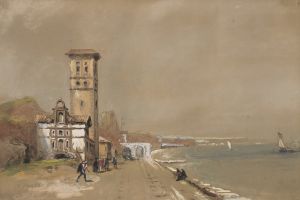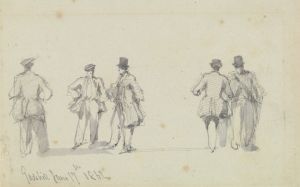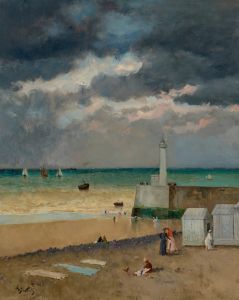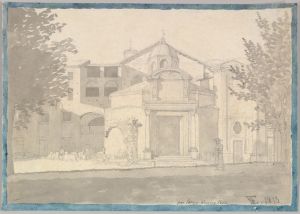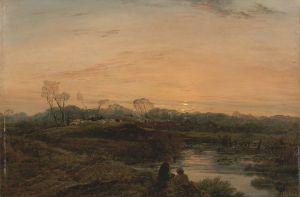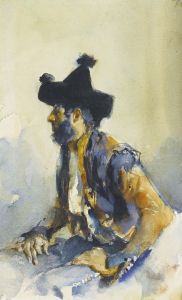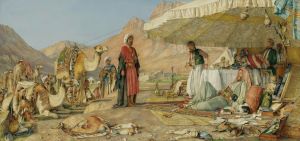
Wady Maharraka, Nubia. Nov. 14th, 1838.
A hand-painted replica of David Roberts’s masterpiece Wady Maharraka, Nubia. Nov. 14th, 1838., meticulously crafted by professional artists to capture the true essence of the original. Each piece is created with museum-quality canvas and rare mineral pigments, carefully painted by experienced artists with delicate brushstrokes and rich, layered colors to perfectly recreate the texture of the original artwork. Unlike machine-printed reproductions, this hand-painted version brings the painting to life, infused with the artist’s emotions and skill in every stroke. Whether for personal collection or home decoration, it instantly elevates the artistic atmosphere of any space.
David Roberts' artwork "Wady Maharraka, Nubia. Nov. 14th, 1838" is a lithograph based on a sketch made during his travels in Egypt and Nubia in the early 19th century. David Roberts (1796–1864) was a Scottish painter and one of the most prominent Orientalist artists of his time. He is best known for his detailed and romanticized depictions of the Middle East, which were widely disseminated in Europe through lithographs.
This particular piece, "Wady Maharraka, Nubia," captures a scene in the region of Maharraka (also spelled Maharraqa or Meharraka), located in Lower Nubia, which is now part of modern-day southern Egypt and northern Sudan. The area is historically significant for its ancient Egyptian and Nubian heritage, including temples and other archaeological remains. The lithograph depicts the landscape of the region, characterized by its arid desert environment, rocky terrain, and the remnants of ancient structures. Roberts' work often emphasized the grandeur and timelessness of these sites, reflecting the fascination of 19th-century European audiences with the ancient world.
The date in the title, November 14, 1838, indicates when Roberts made the original sketch during his journey. This expedition was part of a larger tour of the Middle East that Roberts undertook between 1838 and 1839. He traveled extensively through Egypt, Nubia, the Sinai Peninsula, and the Levant, documenting the landscapes, monuments, and daily life he encountered. His sketches were later transformed into a series of lithographs by Louis Haghe, a master lithographer, and published in the monumental work The Holy Land, Syria, Idumea, Arabia, Egypt, and Nubia (1842–1849). This publication brought Roberts widespread acclaim and contributed significantly to the European understanding and romanticization of the Middle East.
"Wady Maharraka, Nubia" is one of many works by Roberts that highlights the architectural and natural beauty of Nubia. The region was home to several ancient temples, including the Temple of Maharraqa, a small Roman-era structure dedicated to the gods Serapis and Isis. However, the lithograph focuses more on the broader landscape rather than specific architectural details. Roberts' artistic style combines accuracy with a sense of drama, often enhancing the scale and atmosphere of the scenes he depicted.
Today, Roberts' works are valued for their historical significance as visual records of sites that have since changed due to natural erosion, human activity, or, in some cases, submersion following the construction of the Aswan High Dam in the 20th century. His depictions of Nubia, including "Wady Maharraka," remain important resources for understanding the region's cultural and historical landscape during the 19th century.





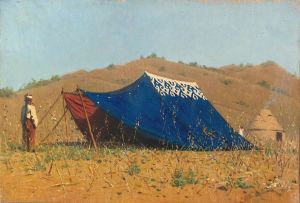


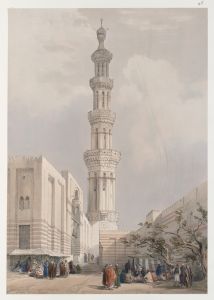
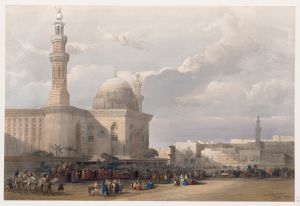
![Ruins of Karnack [Karnak].](/imgs/217533/s/david-roberts-ruins-of-karnack-karnak-f5b9f9ff.jpg)
![Temple of Edfou [Idfû], ancient Appolinopolis, Upper Egypt.](/imgs/217546/s/david-roberts-temple-of-edfou-idfu-ancient-appolinopolis-upper-egypt-2a77d2d6.jpg)
